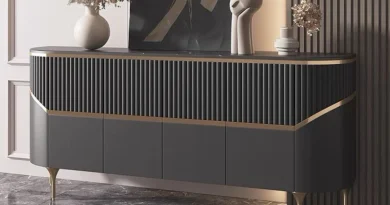Energy Efficiency Considerations For Rafter-Mounted HVAC Platforms In Australia
As Australia grapples with the challenges of climate change and the need for sustainable solutions, energy efficiency has become a critical aspect of building design and operation. Among the many innovations in the HVAC (Heating, Ventilation, and Air Conditioning) industry, rafter-mounted HVAC platforms have become an energy-efficient alternative. This article explores the energy efficiency considerations associated with rafter mounted HVAC platforms in Australia and how they can contribute to reduced energy consumption and environmental impact.
Energy Efficiency Benefits Of Rafter-Mounted HVAC Platforms
- Efficient Air Distribution
Rafter-mounted HVAC platforms are strategically positioned within the building’s roof space, allowing for more efficient and direct distribution of conditioned air. This placement minimizes the distance air must travel, reducing energy losses associated with ductwork and increasing the system’s overall efficiency.
- Reduced Heat Gain
Traditional rooftop HVAC units are often exposed to direct sunlight, leading to heat absorption and increased cooling loads. Rafter-mounted systems, on the other hand, are shielded by the building’s structure, reducing heat gain and alleviating the strain on the cooling system. This can significantly lower energy consumption, especially during hot Australian summers.
- Zoning Capabilities
Rafter-mounted HVAC platforms can be integrated with zoning systems that allow precise control over which building areas receive conditioned air. By providing heating or cooling only where and when needed, these platforms help avoid energy wastage in unoccupied or less frequently used spaces.
- Advanced Controls And Automation
Modern rafter-mounted HVAC systems come equipped with advanced controls and automation features. These systems can change the temperature based on when people are coming and going and the weather outside, which saves energy and keeps people comfortable at the same time.
- Energy Recovery Systems
Some rafter-mounted HVAC platforms in Australia incorporate energy recovery systems that capture and reuse heat energy from exhaust air to pre-condition incoming fresh air. This heat exchange process can cut down on the energy needed to heat or cool the air that comes in, making the system work better overall.
- Environmental Impact
Energy-efficient rafter-mounted HVAC platforms not only benefit building owners in terms of reduced operating costs but also contribute to a lower environmental footprint. Australia’s commitment to reducing greenhouse gas emissions aligns with adopting sustainable technologies.
- Lower Carbon Emissions
Reduced energy consumption translates to fewer carbon emissions associated with electricity generation. Rafter-mounted HVAC platforms play a vital role in achieving Australia’s emission reduction targets by minimizing the carbon footprint of buildings.
- Resource Conservation
Efficient HVAC systems consume fewer resources, extending the lifespan of equipment and reducing the need for replacements. This conservation of resources aligns with Australia’s efforts to promote sustainability and minimize waste.
- Compliance With Building Standards
Australia has established stringent building codes and standards to enhance energy efficiency in construction. Rafter-mounted HVAC platforms can help builders meet these standards and achieve higher energy ratings for their projects.
Considerations For Implementation
While rafter-mounted HVAC platforms offer numerous energy efficiency benefits, their successful implementation requires careful consideration of several factors:
- System Sizing: Properly size the HVAC system to match the building’s heating and cooling loads, ensuring it operates at peak efficiency without unnecessary cycling.
- Insulation: Adequate insulation in the roof space is crucial to prevent heat loss in winter and heat gain in summer, enhancing the platform’s efficiency.
- Local Climate: Consider the local climate and weather patterns when designing and configuring the system to maximize energy savings year-round.
Conclusion
In Australia’s quest for sustainable building practices and reduced energy consumption, rafter-mounted HVAC platforms emerge as a compelling solution. These platforms offer a range of energy efficiency benefits, including efficient air distribution, reduced heat gain, zoning capabilities, advanced controls, and environmental advantages such as lower carbon emissions and resource conservation.
To fully realize the potential of rafter-mounted HVAC platforms, it is essential to plan their implementation carefully, considering system sizing, insulation, maintenance, and the local climate. By doing so, builders and property owners can not only reduce their operational costs but also contribute to Australia’s broader goals of environmental sustainability and energy efficiency in the built environment.




